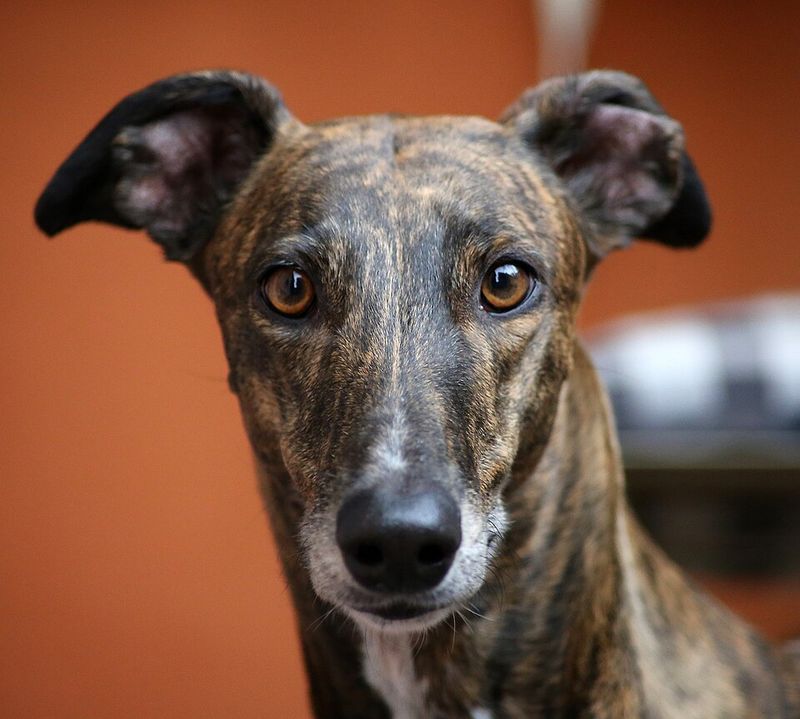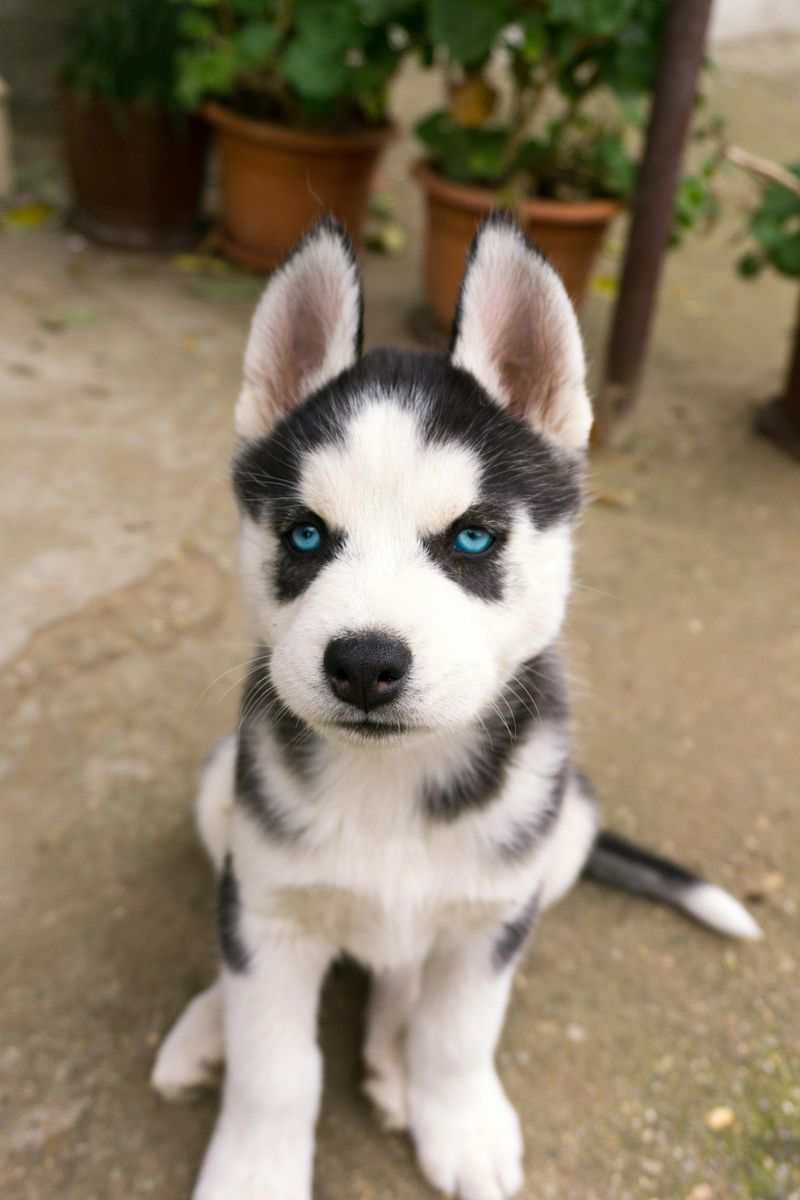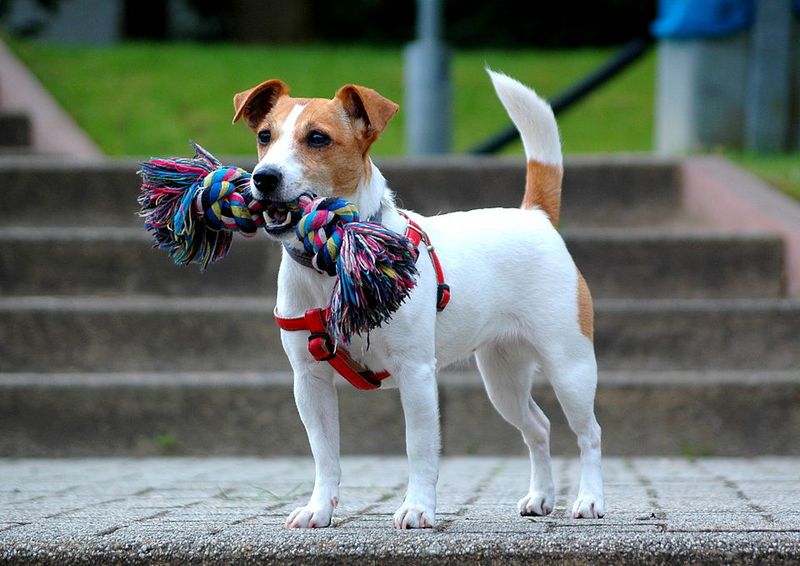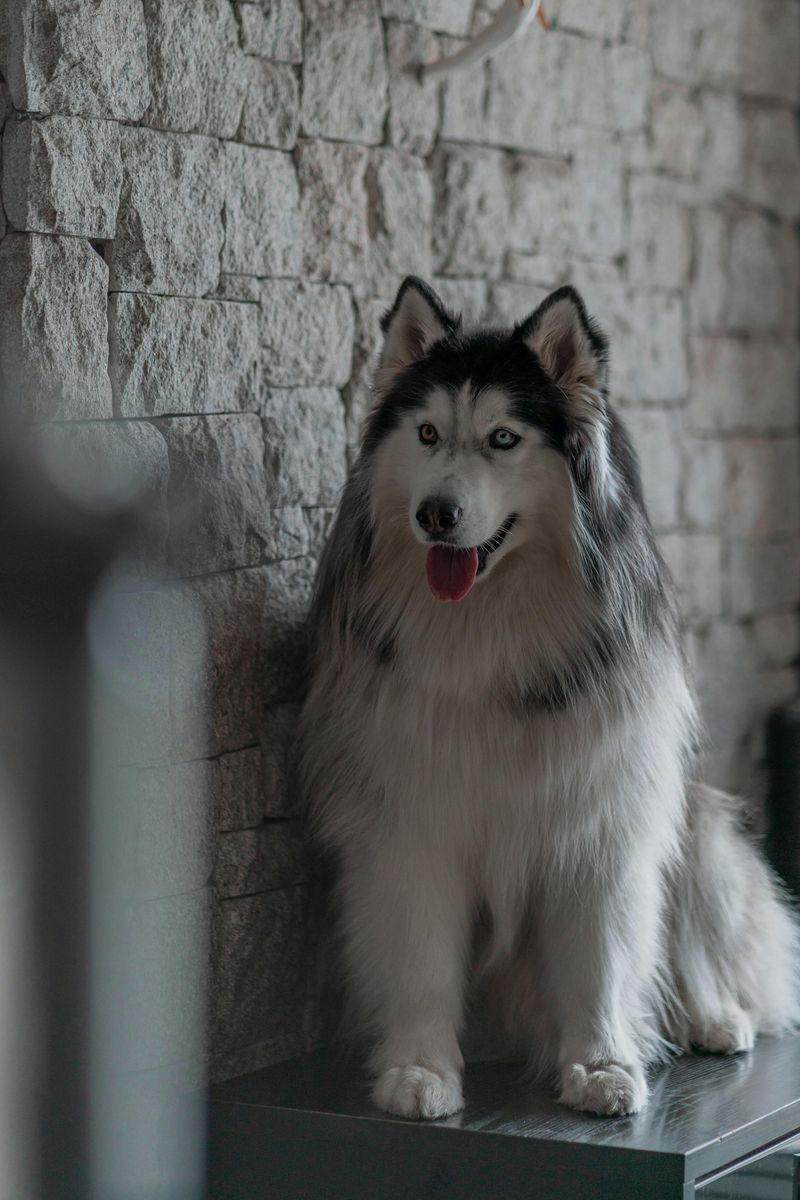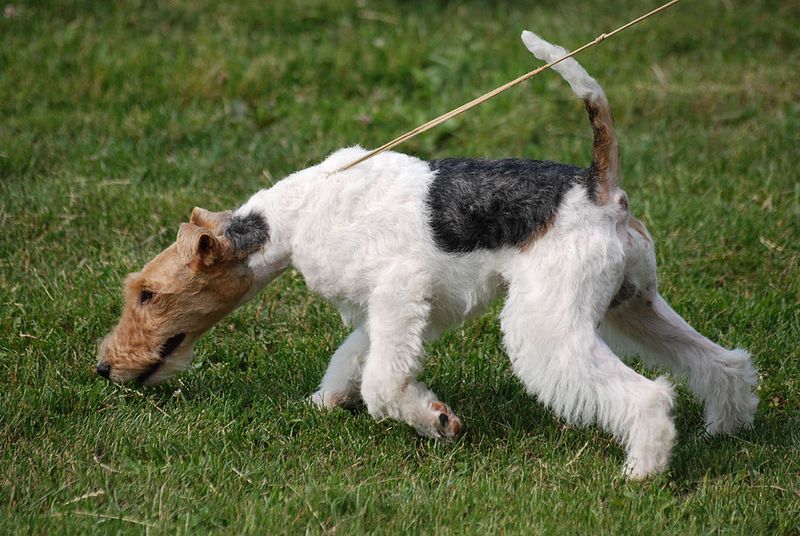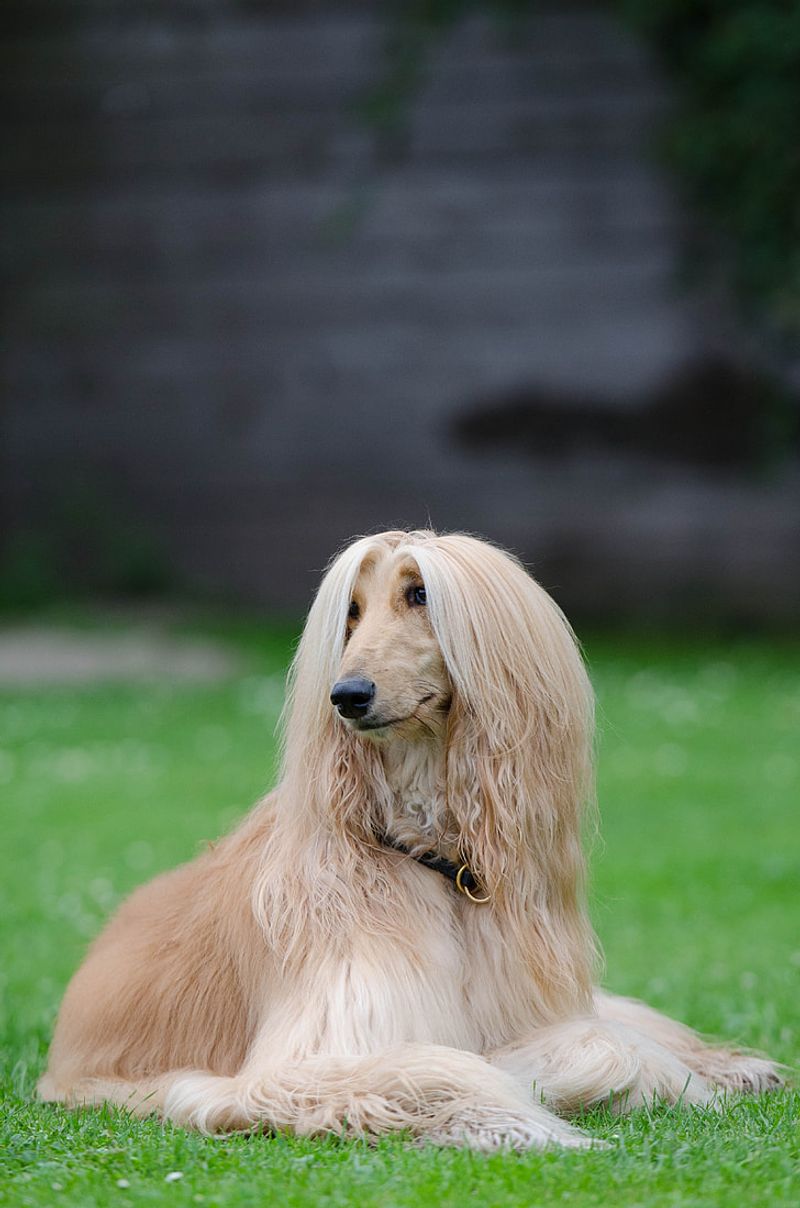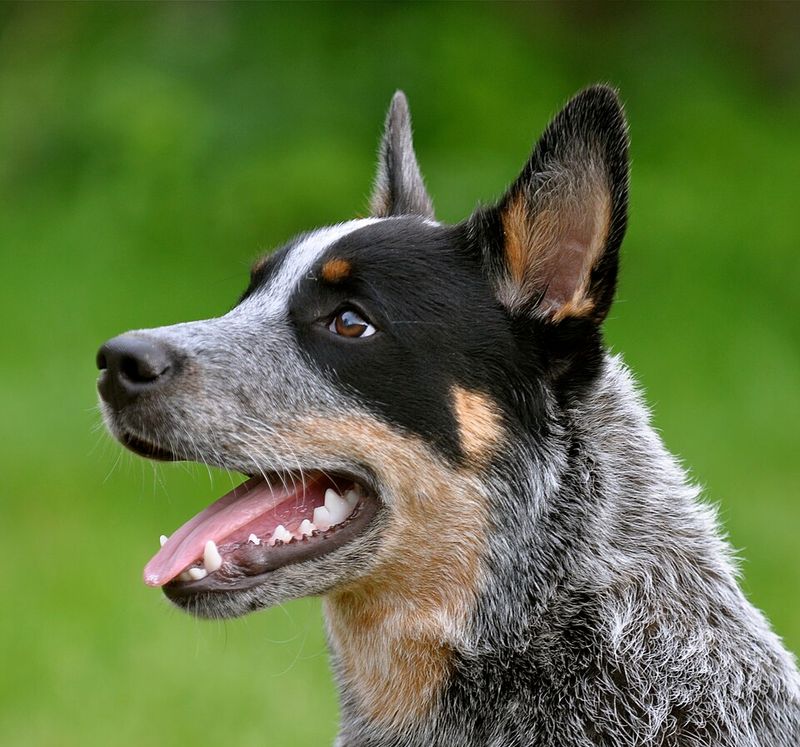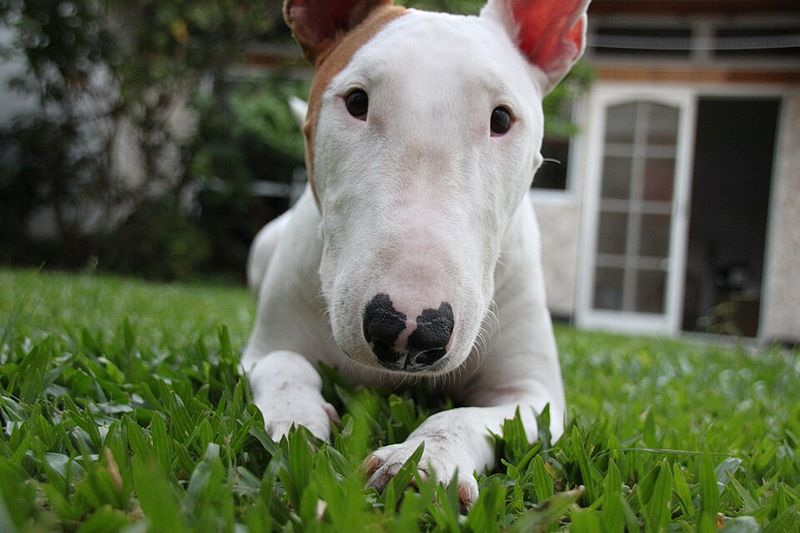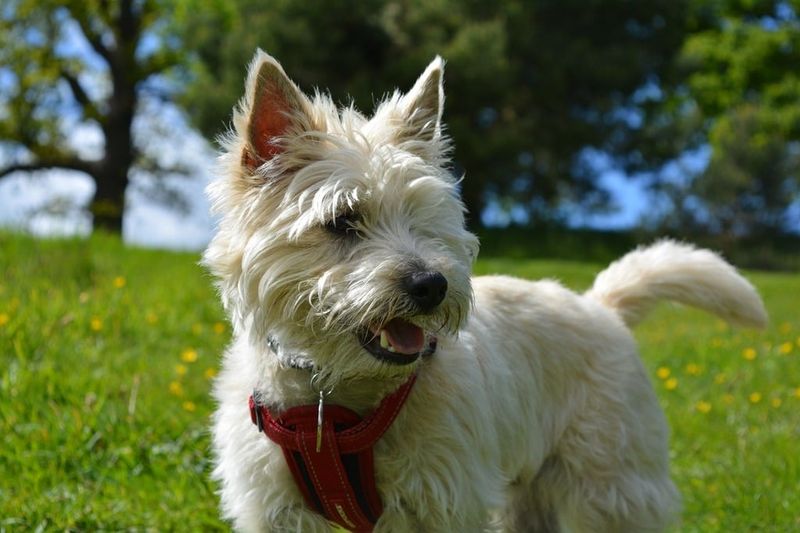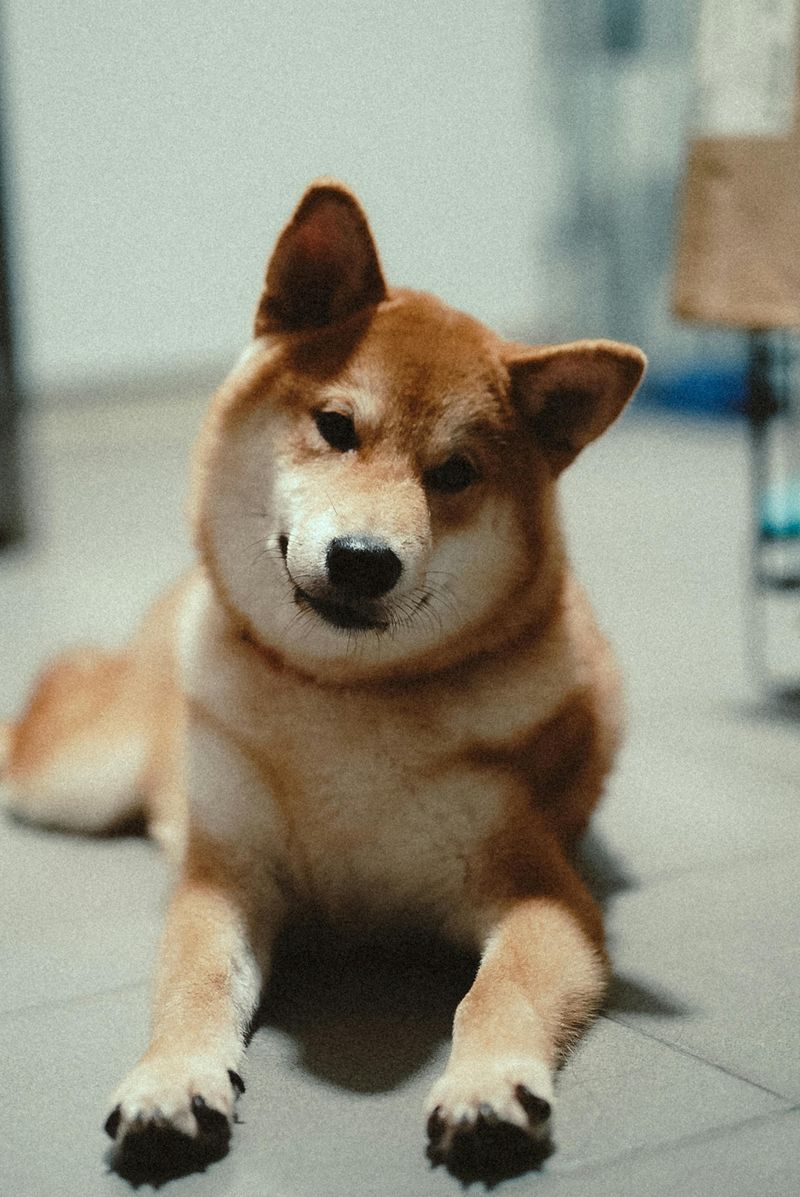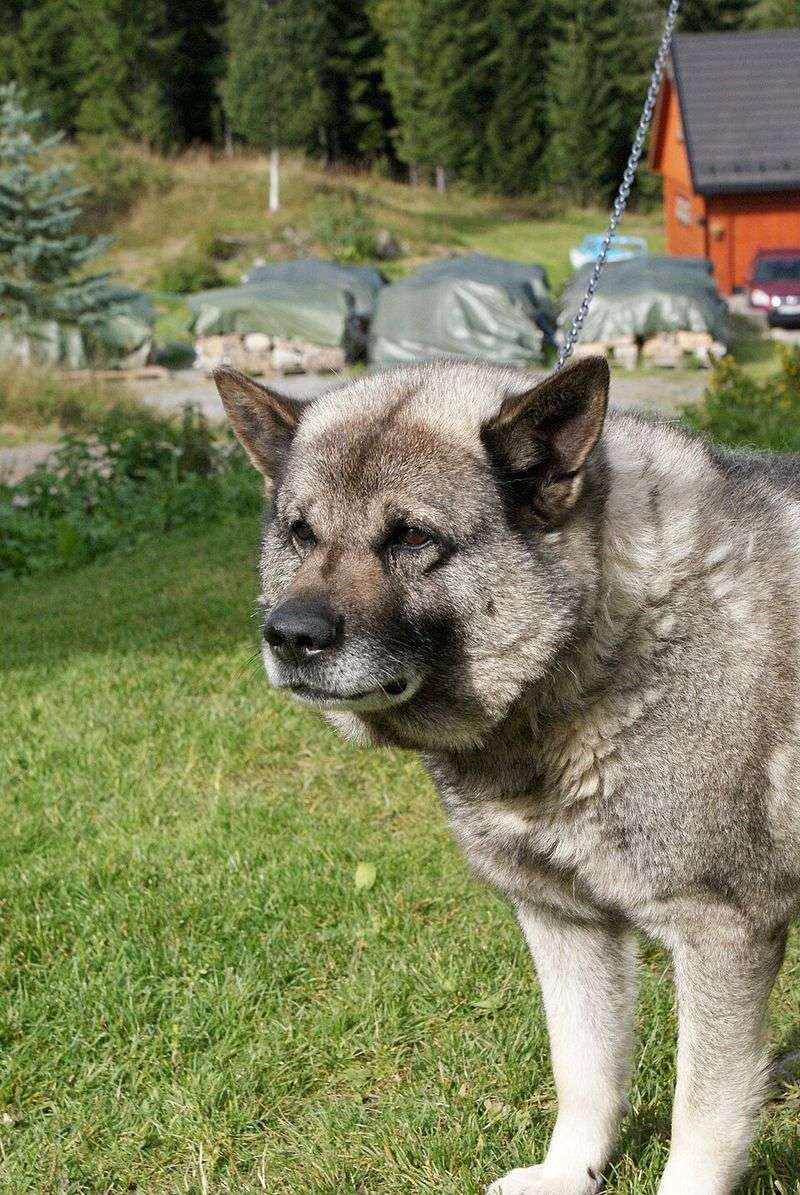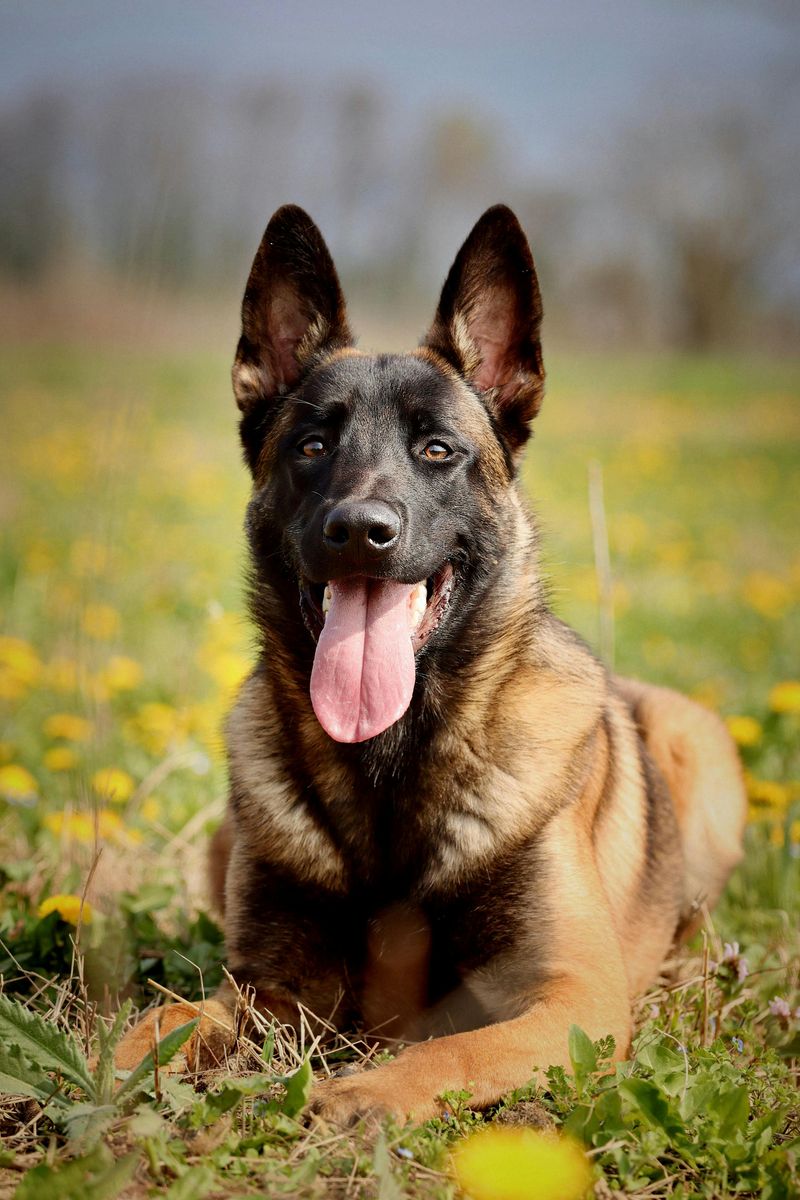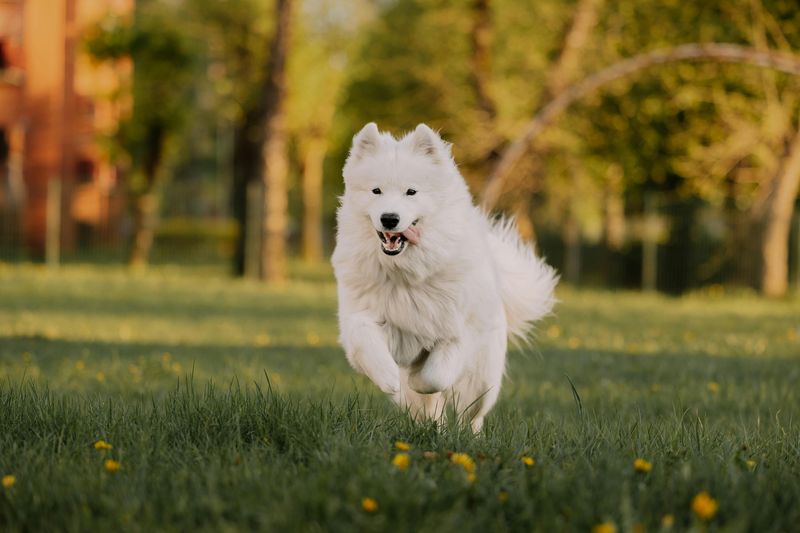When it comes to having both dogs and cats under the same roof, some dog breeds require a bit more attention and care. Breeds with strong prey drives or specific behavioral traits may not be the best match for a household with cats. Here is a list of 25 dog breeds that need extra consideration when living with feline friends.
Greyhound
Sleek and swift, the Greyhound is built for speed, and this often translates into a high prey drive. This breed is known to chase anything that moves quickly, including small animals like cats. Their gentle and affectionate nature with humans might not extend to feline companions if not properly managed.
Training and early socialization are crucial for this breed to coexist peacefully with cats. Owners must monitor interactions to ensure safety. Patience and persistent training can help in making them more accustomed to living with cats, but caution is always advised.
Greyhounds are generally low maintenance in terms of grooming but require ample exercise. A secure yard is essential to prevent any sudden chases. Their unique demeanor makes them a fascinating, albeit challenging, addition to a multi-pet household.
Siberian Husky
Siberian Huskies are known for their striking appearance and boundless energy. They have a natural instinct to view smaller animals as prey, which can include cats. This behavior stems from their history as sled dogs where hunting was part of their survival.
These dogs are pack animals and thrive in environments where they can run and explore. Owners must ensure proper introduction and training to help Huskies adapt to living with cats. Crate training and supervised interactions can aid in reducing unexpected chases.
Huskies also require a lot of mental and physical stimulation, so living with them means being prepared for energetic play sessions. A committed training regimen can help in managing their strong instincts around cats.
Jack Russell Terrier
Jack Russell Terriers are bundles of energy, known for their lively and inquisitive nature. Bred for hunting, they have a strong instinct to chase small creatures, making them less than ideal companions for cats.
Their enthusiasm for play and exploration can sometimes lead to unwanted behavior around feline friends. Proper training and socialization from a young age are crucial to manage their hunting instincts.
Creating a balanced environment with clear boundaries can help alleviate some challenges. Despite their small size, Jack Russells possess a big personality that requires patience and understanding, especially in a multi-pet home.
Alaskan Malamute
With their impressive stature and thick coat, Alaskan Malamutes are strikingly beautiful dogs. They are known for their dominant nature and strong prey instincts, which can pose challenges in homes with cats.
Malamutes have a pack mentality and require an owner who can establish clear leadership. Their size and energy level necessitate a structured environment to prevent any potential conflicts with feline housemates.
Early and consistent training, coupled with supervised interactions, are essential to ensure harmony. Malamutes thrive on exercise and mental challenges, which should be considered when integrating them into a multi-pet household.
Weimaraner
Weimaraners are known for their striking gray coats and boundless energy. Bred as hunting dogs, they have a natural drive to chase, which can make living with cats challenging.
These intelligent dogs require ample exercise and mental stimulation to keep them content and prevent boredom-driven behavior. Owners should implement early training to manage their prey instincts, ensuring a peaceful coexistence with cats.
Weimaraners are affectionate and thrive on human companionship, but their energetic nature needs to be channeled positively. A well-structured environment and consistent boundaries can help maintain harmony in a multi-pet home.
Fox Terrier
Fox Terriers are vivacious and spirited, bred for hunting small game. Their keen instincts make them natural chasers, which can complicate relationships with cats.
Their lively nature requires dedicated training to manage their exuberance and ensure they listen to commands around feline companions. Supervised playtimes and gradual exposure can help ease tensions between these two species.
Despite their small size, Fox Terriers exhibit a large personality that thrives on interaction. A structured environment with clear rules can aid in integrating them successfully into a home with both dogs and cats.
Afghan Hound
Afghan Hounds are known for their regal appearance and independent mindset. This breed is often driven by a strong prey instinct, making them prone to chasing smaller animals like cats.
Their aloof nature requires an owner who understands their unique temperament. Training should focus on managing their instincts and encouraging positive interactions with feline housemates.
Afghan Hounds are not just a pretty face; they require regular grooming and exercise to keep them healthy and happy. With proper guidance, they can learn to coexist peacefully with cats, though supervision is always recommended.
Australian Cattle Dog
Known for their intelligence and herding prowess, Australian Cattle Dogs are hardworking and determined. Their natural herding instincts can sometimes stress cats, as they may attempt to corral them.
Training and socialization are key to moderating this behavior, helping the breed understand boundaries within the household. A structured routine and ample exercise can prevent unwanted interactions with feline companions.
Cattle Dogs are loyal and protective, making them excellent companions with the right guidance. Consistent reinforcement and supervision can promote a harmonious environment with cats.
Beagle
Beagles are known for their excellent sense of smell and lively nature. As scent hounds, they have a natural inclination to follow their noses, which can lead to chasing smaller animals like cats.
Their friendly demeanor and sociable nature make them popular companions, but their hunting background requires attention when living with cats. Owners should focus on training that channels their instincts positively.
Beagles thrive on activity and companionship, so providing sufficient mental and physical stimulation is essential. With the right approach, they can learn to coexist peacefully with feline friends.
Whippet
Whippets are known for their speed and grace, resembling miniature Greyhounds. They possess a strong prey drive, often triggered by fast-moving animals like cats.
These gentle dogs require careful introduction and training to adapt to living with feline companions. Owners should provide a secure environment where Whippets can exercise their need for speed without posing a risk to smaller animals.
With proper guidance, Whippets can exhibit a calm and affectionate demeanor, making them wonderful companions. However, supervision is always advised when they interact with cats.
Irish Wolfhound
Gentle giants of the dog world, Irish Wolfhounds have a commanding presence. Despite their calm nature, their size and instinct to chase can be daunting for household cats.
These dogs are known for their kind and noble disposition with people, but their hunting heritage means caution is needed around smaller animals. Owners should ensure proper control and training.
Irish Wolfhounds require ample space and exercise, thriving in a supportive environment. With the right approach, they can become gentle companions to cats, though supervision remains important.
Rhodesian Ridgeback
Rhodesian Ridgebacks are known for their courage and independence. Originally bred for hunting lions, they possess strong instincts that can pose challenges when living with cats.
Their territorial nature requires a firm and consistent training approach to ensure peaceful cohabitation with feline friends. It’s essential to establish boundaries and provide structured socialization.
Ridgebacks are loyal and protective, making them excellent companions with the right guidance. They thrive in active homes that can provide the exercise and stimulation they need.
Bull Terrier
Known for their distinctive appearance and muscular build, Bull Terriers are energetic and excitable. Their strong personality requires diligent training and clear boundaries, especially when living with cats.
These dogs are affectionate with their families but can be overwhelming to smaller animals if not properly managed. Consistent training from an early age is crucial to mitigate their excitable nature around feline housemates.
Bull Terriers thrive on human interaction and need plenty of physical activity. With patience and supervision, they can learn to coexist with cats, though caution is always warranted.
Airedale Terrier
Airedale Terriers, the “King of Terriers,” are known for their intelligence and versatility. Their dominant nature and high energy levels can be challenging when living with cats.
Bred for hunting, they possess a strong prey drive, requiring careful management and training. Socialization from a young age is crucial to help them respect feline boundaries.
Airedale Terriers are loyal and protective, thriving in active families that can meet their exercise needs. With the right guidance, they can become respectful companions to cats, though supervision is advised.
Cairn Terrier
Cairn Terriers, known for their spirited nature, were originally bred to hunt small game. This history endows them with an instinct to chase, which can complicate relationships with cats.
Despite their small size, Cairn Terriers have a big personality and require firm training to manage interactions with feline companions. Early socialization is key to fostering a peaceful coexistence.
These terriers are lively and intelligent, enjoying active play sessions. With patience and consistent boundaries, they can learn to live harmoniously with cats, though vigilance remains necessary.
Saluki
Salukis are known for their grace and speed, often compared to aristocrats of the dog world. Their sight hound nature means they are easily triggered by movement, making them prone to chase smaller animals like cats.
Their independent demeanor requires an owner who can provide structured training and guidance. It’s essential to create an environment where Salukis can exercise without posing a threat to feline companions.
With proper socialization and patience, Salukis can coexist with cats, though supervision is always recommended. Their unique personality and elegance make them a fascinating addition to any household.
Dachshund
Dachshunds, with their distinctive long bodies and lively nature, were originally bred for hunting small prey. This instinct to burrow and chase can make living with cats a challenge.
Despite their small size, Dachshunds have a determined personality. Training and socialization are essential to help them understand boundaries with feline companions.
These dogs are affectionate and enjoy interactive play, making them popular pets. With the right management and supervision, they can learn to coexist with cats, though caution is always advised.
Shiba Inu
Shiba Inus are known for their spirited and independent nature. With strong prey instincts, they often view smaller animals like cats with curiosity, sometimes leading to chasing behavior.
These dogs require a firm hand in training, focusing on socialization and establishing boundaries. Patience and consistency are key to fostering positive interactions with feline housemates.
Shiba Inus are intelligent and adaptable, thriving in environments where they can exercise their curious nature. With careful guidance, they can learn to coexist with cats, though vigilance is important.
Basenji
Basenjis, often referred to as the “barkless dog,” are known for their unique vocalizations and curious nature. With a strong prey drive, they can be challenging companions for cats.
These dogs require early socialization and training to help manage their instincts around smaller animals. Providing mental stimulation and structured routines can aid in harmonious living arrangements.
Basenjis are independent and intelligent, enjoying exploration and play. With the right approach and supervision, they can learn to coexist with cats, although caution is essential to prevent unwanted chases.
American Foxhound
American Foxhounds, known for their endurance and keen sense of smell, are natural chasers. Their hunting background means they may view cats as potential quarry.
Training and socialization are vital to managing their instinctual behavior around smaller animals. A structured environment with clear boundaries can help in fostering peaceful coexistence with feline companions.
These dogs are friendly and enjoy active play, making them excellent pets with the right guidance. With dedication and supervision, they can learn to live harmoniously with cats, though vigilance is always necessary.
Norwegian Elkhound
Norwegian Elkhounds, bred for hunting large game, possess a strong prey drive and high energy levels. This combination can make living with cats a bit challenging.
Training is essential to manage their instincts and help them recognize feline companions as part of the family. Consistent socialization and clear boundaries are key to fostering a peaceful home environment.
These dogs are loyal and protective, requiring ample exercise and mental stimulation. With the right approach, Elkhounds can learn to coexist with cats, though supervision is recommended to prevent unwanted pursuits.
Belgian Malinois
Belgian Malinois are known for their intelligence and work ethic, often employed in roles requiring focus and discipline. Their intense herding instincts and territorial behavior can pose challenges when living with cats.
Early training and structured routines are crucial to managing interactions with feline companions. Owners must establish clear leadership to prevent any unwanted behavior.
These dogs thrive on mental and physical challenges, making them excellent companions with the right environment. With dedication and supervision, Malinois can learn to live harmoniously with cats, though vigilance is necessary.
Samoyed
Samoyeds, known for their friendly smiles and fluffy white coats, are playful and energetic dogs. Their instinct to chase can sometimes extend to smaller animals like cats.
Training and socialization are important to channel their playful energy positively. Structured play and clear boundaries can help in fostering peaceful interactions with feline companions.
These dogs are social and affectionate, enjoying the company of their families. With the right approach and supervision, Samoyeds can learn to coexist with cats, though owners should remain watchful during play.
Dalmatian
Dalmatians are known for their distinctive spots and high energy levels. Their exuberance can sometimes lead to rough play, posing challenges when living with cats.
Training is crucial to manage their energetic nature and ensure respectful interactions with feline housemates. Structured routines and consistent boundaries can aid in preventing unwanted behavior.
These dogs thrive on activity and companionship, making them wonderful pets for active families. With patience and supervision, Dalmatians can learn to live harmoniously with cats, though caution is always advised.
Border Collie
Border Collies, renowned for their intelligence and herding skills, are hardworking and energetic. Their natural herding instincts can sometimes stress cats, as they may attempt to corral them.
Training and socialization from an early age are essential to manage these instincts and ensure peaceful coexistence with feline companions. Clear boundaries and structured routines can help in creating a harmonious home.
These dogs excel in environments that provide mental and physical challenges. With the right guidance and supervision, Border Collies can learn to live amicably with cats, though vigilance is necessary.

